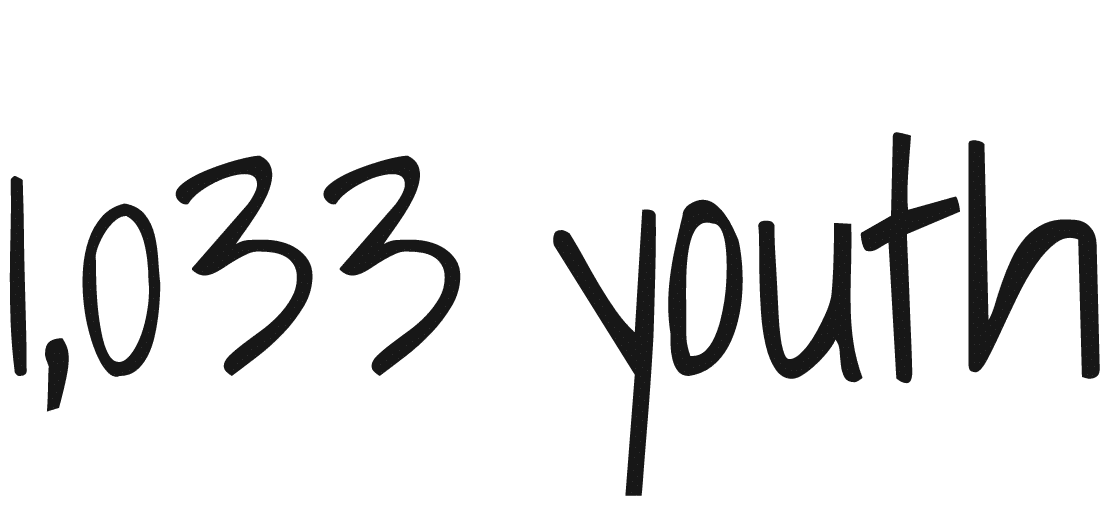Youth homelessness in Toronto

(aged 16 – 24) accessed the Toronto shelter system in June 2023. The total number of youth experiencing homelessness in Toronto is likely higher due to hidden homelessness, where young people couch surf and sleep in cars and vacant buildings.1
There is an overrepresentation of Black, racialized, 2SLGBTQ+, and newcomer youth experiencing homelessness due to discrimination and racism embedded into systems across Canada.
From the 2021 City of Toronto Street Needs Assessment regarding youth experiencing homelessness2:

of youth identified as racialized, of which 43% identified as Black

of youth identified as 2SLGBTQ+

of youth identified as a refugee/refugee claimant
Pathways into
youth homelessness
youth homelessness
Young people experiencing or at risk of homelessness often grapple with poverty, racism, homophobia, transphobia, and discrimination.
of homeless youth experienced childhood trauma and abuse3
The stress and related trauma from experiencing homelessness significantly impacts the mental health of young people.
85%
of homeless youth reported high symptoms of distress4
42%
of homeless youth reported at least one suicide attempt5
Anti-black racism and discrimination fuel disparities in child welfare, education, employment, healthcare, and housing systems. For example:
In the 2016–17 school year, Black students comprised 11% of the Toronto District School Board (TDSB) population but represented 36.2% of suspensions/expulsions, indicating a significant overrepresentation.6
Compared to white families/children, Black children/families are:
2.2x
as likely to be investigated by the Ontario child welfare system7
&
2.5x
as likely to have their case substantiated8

Discrimination within the education system results in youth experiencing fewer opportunities to pursue higher education and perpetuates the cycle of poverty. Racism in the child welfare system disrupts family structures, which puts Black youth and families at greater risk of experiencing homelessness.
Cost of
living crisis
living crisis
With prices skyrocketing for necessities such as food and housing over the past year, young people experiencing or at risk of homelessness are facing even greater challenges.
